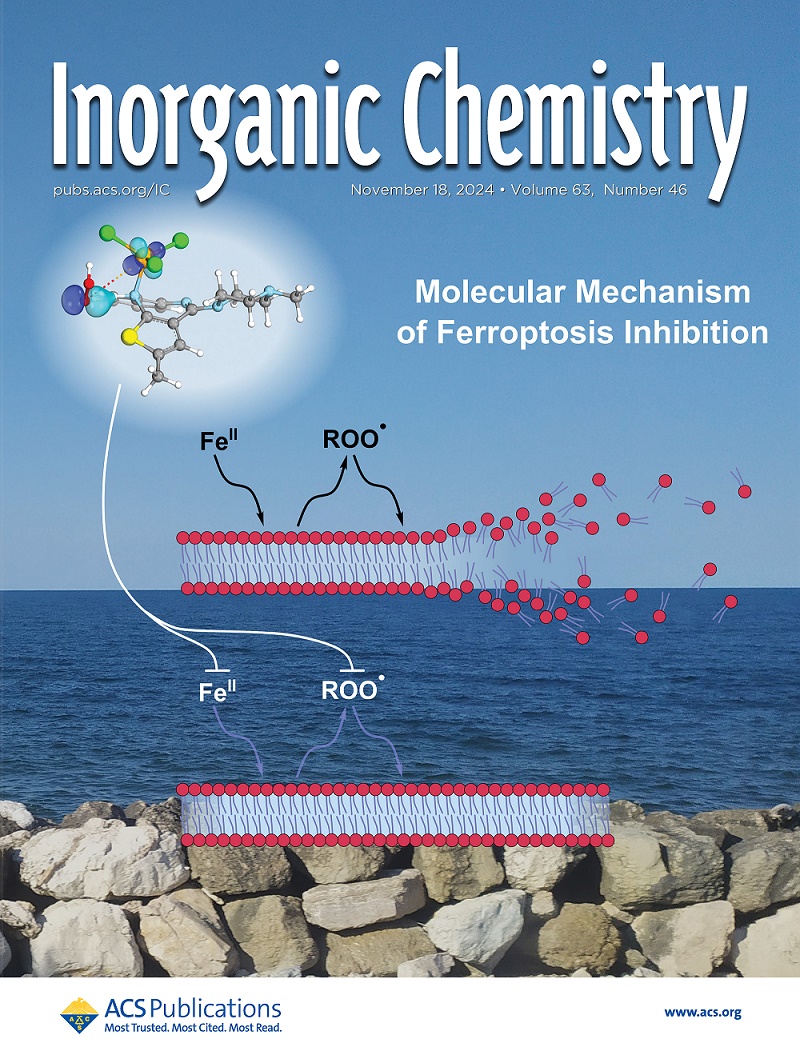ZnH2 as a Precursor to Catalytically Active Ru–ZnH Heterometallic Complexes
IF 4.3
2区 化学
Q1 CHEMISTRY, INORGANIC & NUCLEAR
引用次数: 0
Abstract
Reaction of [Ru(IPr)2(CO)H][BArF4] (1; IPr = 1,3-bis(2,6-diisopropylphenyl)imidazol-2-ylidene; BArF4 = B{3,5(CF3)2C6H3}4) with an excess of ZnH2 in THF gives the structurally characterized neutral Ru(ZnH) complex [Ru(IPr)2(CO)(ZnH)H3] (6) and Ru(ZnH)2 salt [Ru(IPr)2(CO)(ZnH)2H3][BArF4] (5). Crystallographic and computational analyses show the presence of both bridging Ru–H–Zn hydrides and terminal Ru-hydrides in the two products. Calculations also identify a low-energy H/ZnH exchange pathway that rationalizes the experimentally observed (EXSY) fluxionality of the hydrides in 5. At room temperature, this compound undergoes stoichiometric exchange with ZnMe2 to give [Ru(IPr)2(CO)(ZnMe)2H3][BArF4] (7), and also proves to be catalytically active for the hydrogenation of 1-hexene and 5-hexene-2-one.

求助全文
约1分钟内获得全文
求助全文
来源期刊

Inorganic Chemistry
化学-无机化学与核化学
CiteScore
7.60
自引率
13.00%
发文量
1960
审稿时长
1.9 months
期刊介绍:
Inorganic Chemistry publishes fundamental studies in all phases of inorganic chemistry. Coverage includes experimental and theoretical reports on quantitative studies of structure and thermodynamics, kinetics, mechanisms of inorganic reactions, bioinorganic chemistry, and relevant aspects of organometallic chemistry, solid-state phenomena, and chemical bonding theory. Emphasis is placed on the synthesis, structure, thermodynamics, reactivity, spectroscopy, and bonding properties of significant new and known compounds.
 求助内容:
求助内容: 应助结果提醒方式:
应助结果提醒方式:


